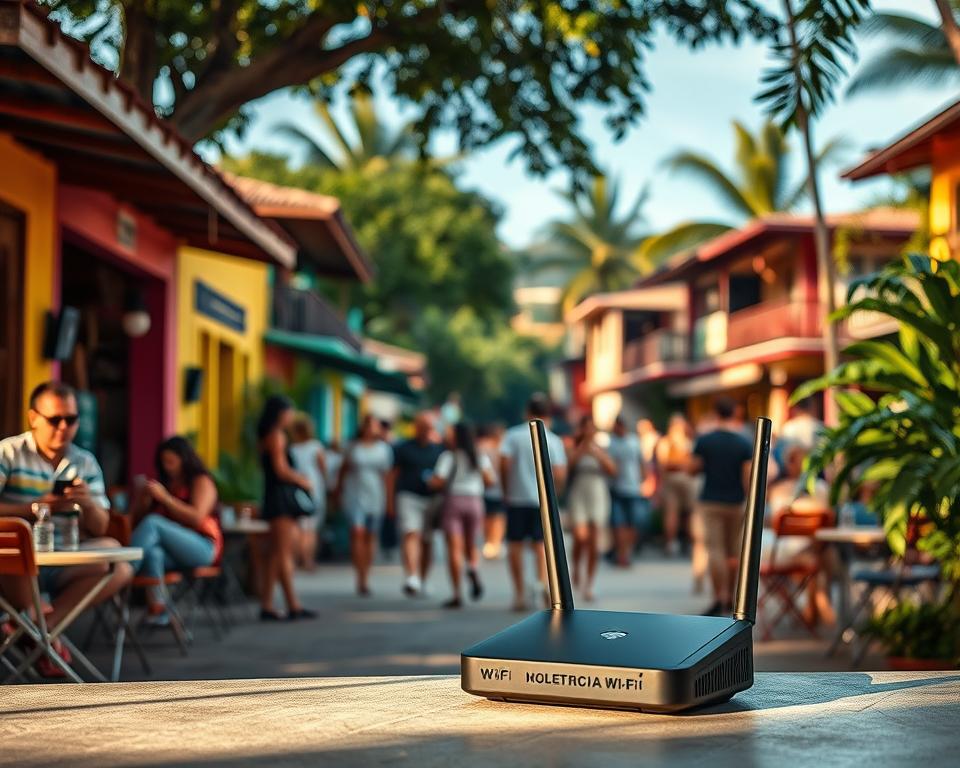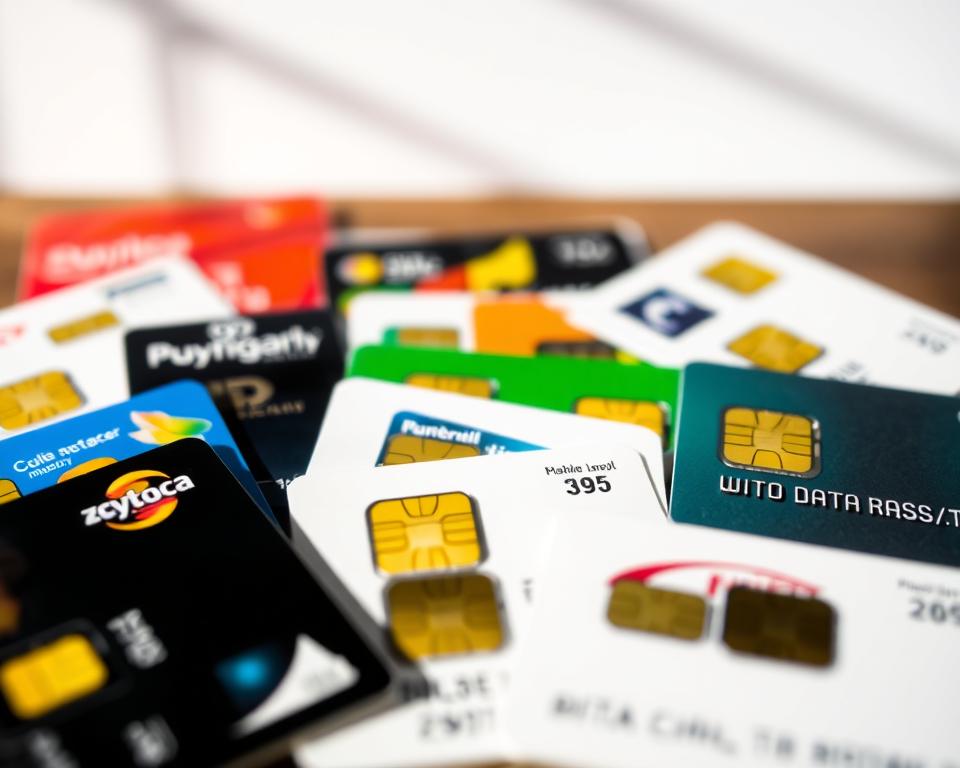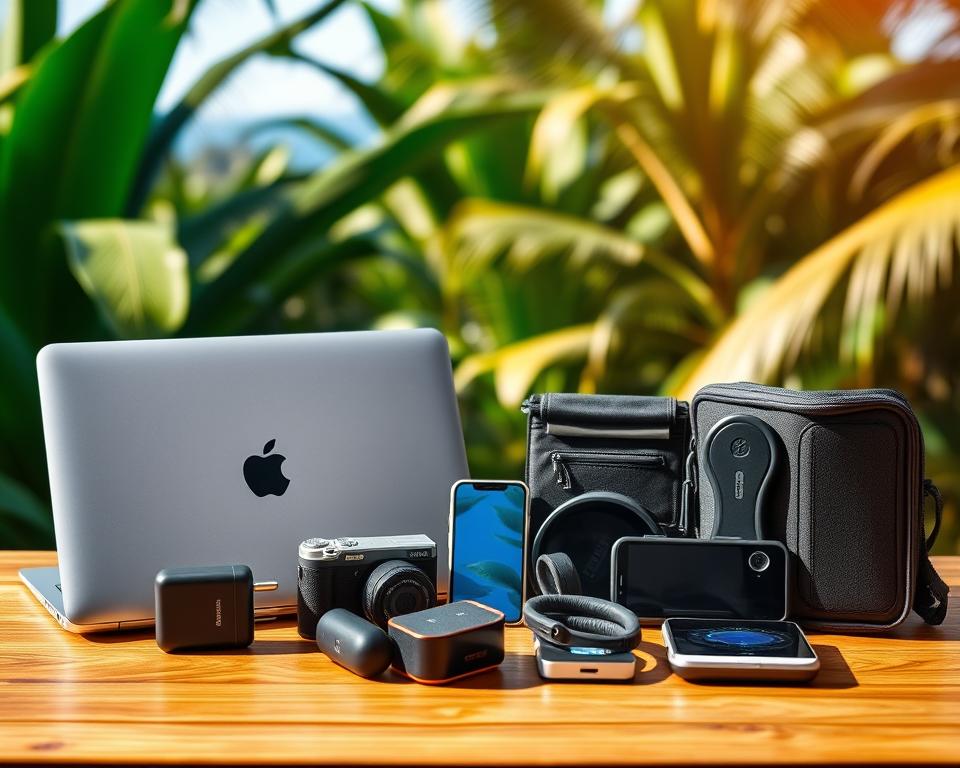About WiFi in Costa Rica: What You Need to Know for a Seamless Relocation
Reliable digital access is a cornerstone of modern living, especially when relocating abroad. Over the past two decades, Costa Rica has transformed its technological landscape. What once relied on sparse internet cafes now offers widespread connectivity, from bustling San Jose to serene coastal hubs like Playa Ventanas.
At Gap Real Estate, we’ve supported clients across the country for over 20 years. Our coast-to-coast expertise ensures you navigate local infrastructure confidently. Whether securing a home with high-speed service or understanding mobile data plans, practical insights matter.
This guide blends technical details with real-world context. We’ll explore how evolving technology meets everyday needs, from SIM card choices to regional coverage variations. Historical shifts—like the rise of 4G networks—highlight why preparation is key for seamless transitions.
Staying connected isn’t just about convenience. It’s about thriving in your new environment. Let’s simplify your journey with clarity, precision, and trusted local knowledge.
Understanding Costa Rica’s Digital Landscape
Navigating connectivity here requires balancing modern advancements with regional realities. Urban zones like San José boast download speeds averaging 50 Mbps, while mountainous regions often dip below 10 Mbps. This gap reflects infrastructure investments prioritizing commercial hubs.
Technological Progress and Modern Connectivity
Fiber-optic expansions now reach 70% of populated zones. Major service providers like Kölbi and Claro offer bundled plans combining home internet with mobile data. Three factors drive growth:
- Government tax incentives for telecom upgrades
- Tourism sector demands reliable access
- Remote work migration post-pandemic
Local Trends and Urban Versus Rural Experiences
Coastal towns popular with expats often have better coverage than agricultural villages. We recommend:
- Testing network signals before leasing long-term
- Using dual SIM cards for carrier redundancy
- Prioritizing LTE-enabled devices
While 4G reaches 85% of the population, terrain challenges persist. Our team cross-references coverage maps with hyperlocal insights to match clients with optimal locations.
About WiFi in Costa Rica
Smart preparation ensures seamless connectivity during relocation. Start by securing a local SIM card—available at airports, kiosks, or official stores. Major providers like Kölbi, Claro, and Liberty offer prepaid options with varying data packages.
Key Insights and Practical Considerations
Kölbi’s nationwide coverage makes it ideal for rural areas, while Claro often delivers faster speeds in San Jose. Liberty provides competitive pricing for short-term stays. Compare plans based on your usage:
- Basic packages: 3–5 GB monthly for light browsing
- Mid-tier options: 10–15 GB for streaming and remote work
- Unlimited plans: Available in select urban zones
Test network signals before committing to long-term rentals. Many expats use dual-SIM devices to combine carrier strengths. Download speeds average 20–50 Mbps in cities but drop near mountains or beaches.
Public networks exist in malls and cafes, but prioritize secure connections. Our team cross-checks real-time coverage maps with client needs—whether remote work or casual browsing. Two decades of local experience shape these tailored recommendations.
Public and Private Wi-Fi Services in Costa Rica
Staying connected here means balancing convenience with security. Public networks offer quick access but require caution, while private services prioritize encrypted connections. Understanding both options ensures safer browsing across cities and rural zones.

Exploring Public Wi-Fi Hotspots and Open Networks
Free hotspots thrive in airports like Juan Santamaría, parks, and malls such as Multiplaza Escazú. These networks let travelers check emails or maps instantly. However, avoid accessing bank accounts or sensitive data without a VPN. Session timeouts and pop-up logins are common safeguards.
Popular tourist spots like Tamarindo beaches often have open networks with limited bandwidth. We recommend:
- Using antivirus software before connecting
- Disabling auto-connect features on devices
- Sticking to HTTPS websites for basic tasks
Secured Private Wi-Fi in Hotels, Restaurants, and Offices
Most hotels and coworking spaces provide password-protected networks with higher speeds. Chains like Hilton Garden Inn and local cafes like Café Miel enforce WPA3 encryption. Offices typically combine fiber-optic lines with enterprise-grade firewalls.
For long-term stays, verify a property’s reliable internet access in Costa Rica during tours. Private networks excel for video calls or streaming but may require daily passcodes. Always enable two-factor authentication on accounts, even when using secured connections.
Navigating Data Plans and SIM Cards in Costa Rica
Securing reliable mobile connectivity starts with choosing the right tools and strategies. Local SIM cards provide instant access to networks, while prepaid plans offer flexibility for short-term stays or long-term exploration.
Step-by-Step Guide to Purchasing a SIM Card
Follow this streamlined process to activate service quickly:
- Confirm your phone is unlocked and compatible with GSM networks
- Visit authorized stores like Kölbi outlets or City Mall kiosks near the SJO airport
- Present your passport for registration (required by law)
- Choose a provider based on coverage needs: Kölbi for rural areas, Claro for urban areas
- Insert the new SIM and restart your device
- Disable roaming to avoid carrier charges
- Activate data packages via provider apps or USSD codes
Store your original SIM in a protective case. Many travelers use dual-SIM phones to maintain home numbers while using local data.

Comparing Prepaid Data Plans and Pricing Options
Major carriers offer tiered packages:
- Kölbi: ₡5,000 ($10) for 3 GB monthly + nationwide coverage
- Claro: ₡7,500 ($15) for 10 GB with 4G speeds in San José
- Liberty: ₡10,000 ($19) unlimited social media + 5 GB general data
Top-up cards are sold at supermarkets and pharmacies. For heavy users, Kölbi’s ₡15,000 ($29) plan provides 20 GB with rollover data. Verify coverage maps against your travel routes – mountain regions often require signal boosters.
Essential Electronic Devices and Accessories for Travelers
Packing the right tech gear transforms how you experience Costa Rica’s diverse landscapes. From cloud forests to coastal towns, reliable tools keep you connected and prepared for adventure.

Must-Have Gadgets for Staying Connected
These devices bridge gaps in service coverage and power availability:
- Multi-port USB-C adapters: Charge phones, cameras, and laptops simultaneously using Costa Rica’s 120V outlets (compatible with North American plugs)
- 20,000mAh power banks: Brands like Anker provide 4-5 phone charges, critical during jungle hikes or beach days
- Waterproof action cameras: GoPro models capture surf sessions while syncing wirelessly to cloud storage via mobile hotspots
Carry extra charging cables – humidity and sand accelerate wear. Dual-SIM smartphones let you switch between local providers like Kölbi and Claro for better signal strength.
Backup photos nightly to portable SSDs. Western Digital’s 1TB models withstand tropical conditions. For remote work, LTE-enabled tablets paired with Bluetooth keyboards maintain productivity when Wi-Fi falters.
We’ve field-tested these setups across Osa Peninsula lodges and Guanacaste vacation rentals. Smart preparation ensures you’ll share sunset selfies or submit reports without interruption.
Best Practices for Safe and Secure Internet Use
Protecting your digital footprint is critical when exploring Costa Rica’s vibrant cities or remote retreats. Cyber threats often target travelers through unsecured networks, making proactive measures essential for safe browsing.
Tech Safety Measures When Using Public Networks
Open hotspots in parks or supermarkets pose risks like data interception. Follow these steps to minimize exposure:
- Activate a VPN to encrypt traffic before connecting
- Disable file-sharing and Bluetooth when not in use
- Avoid accessing bank accounts or entering passwords
In 2023, a café in San José reported multiple phishing attacks via fake login pages. Always verify network names with staff to avoid spoofed connections.
Tips for Protecting Personal Data and Devices
Strengthen your defenses with these tested strategies:
- Update antivirus software weekly
- Enable “Find My Phone” features and remote wipe capabilities
- Use password managers to generate 12-character codes
Backup devices to cloud storage every 48 hours. For high-risk areas, consider Faraday bags to block RFID skimming. Our team pre-configures security settings for clients based on regional threat patterns observed since 2005.
Local Internet Service Providers and Speed Coverage
Choosing the right internet provider shapes your daily experience across cities and the countryside. Three dominant companies deliver most connections: Claro, Kölbi, and Cabletica. Each excels in different regions and technologies, creating a varied landscape for residents and travelers.
Performance Metrics Across Key Regions
Claro leads in urban zones like San José with average speeds of 75 Mbps via fiber-optic lines. Their 5G trials show promising results near commercial districts. Kölbi dominates rural areas with extensive 4G coverage, though speeds drop to 15 Mbps in mountainous Nicoya. Cabletica balances affordability and reliability, offering 50 Mbps cable connections along the Central Valley.
Recent tests in Limón reveal stark contrasts. Coastal areas average 30 Mbps via fixed wireless, while inland towns often rely on DSL at 10 Mbps. Puntarenas sees similar divides – fiber reaches 60% of hotels but only 20% of residential zones.
Technologies impact performance:
- Fiber-optic: 70–100 Mbps (limited to metro areas)
- Cable: 40–60 Mbps (common in suburbs)
- DSL: 5–15 Mbps (rural default)
Tourist hotspots like La Fortuna feature public Wi-Fi in central parks, but bandwidth remains scarce during peak hours. Always verify provider maps – Kölbi’s app shows real-time tower status, while Cabletica updates coverage quarterly.
We match clients with optimal services through speed tests and infrastructure audits. Remote workers prioritize fiber reliability, while casual users benefit from Kölbi’s rural reach. Your location dictates the smartest choice.
Partnering with Gap Real Estate for a Seamless Experience
Navigating relocation requires more than property searches – it demands trusted guidance through local systems. Our team bridges cultural and technical gaps, ensuring you settle into communities while staying digitally connected.
How Our 20+ Years of Costa Rican Expertise Simplifies Your Move
We’ve helped over 3,000 clients transition smoothly since 2003. From decoding lease terms to identifying neighborhoods with fiber-optic access, our insights save time and reduce stress. Recent clients in San José secured homes with pre-installed Claro fiber lines through our vendor network.
Rural relocations benefit from our coverage maps and signal testing. One family near Nosara avoided dead zones by selecting a Kölbi-supported property we vetted. We cross-reference infrastructure updates with hyperlocal realities you won’t find online.
End-to-End Support for Relocation and Investment
Our services extend beyond real estate:
- SIM card procurement during airport pickup
- Side-by-side comparisons of internet service providers
- Negotiating bundled utility packages with landlords
A 2023 client streamlines remote work using our curated list of LTE-enabled coworking spaces. Another investor tapped our telecom contacts to install enterprise-grade routers in a Guanacaste rental complex. Whether securing temporary mobile plans or permanent fiber connections, we turn complexities into checklists.
Clear communication defines our approach. Weekly updates, translated contracts, and 24/7 emergency support let you focus on new beginnings. Discover how two decades of problem-solving create your seamless transition.
Conclusion
Establishing reliable connectivity forms the foundation of successful relocation in today’s mobile-first world. This article has outlined essential tools – from choosing local SIM cards to evaluating network coverage – that empower seamless transitions. Understanding service providers, data plans, and regional infrastructure variations helps you stay connected across cities and rural areas.
Staying informed about evolving technology ensures you select devices and solutions that match your lifestyle. Whether prioritizing download speeds for remote work or secure connections for travel, preparation transforms challenges into opportunities.
With over two decades of local expertise, we simplify every step. Our team cross-references real-time coverage maps, negotiates service plans, and tests connectivity during property tours. This hands-on approach bridges gaps between expectations and on-the-ground realities.
Ready to begin your journey? Visit our website or message us via WhatsApp for a personalized consultation. Let’s turn Costa Rica’s digital landscape into your advantage – one secure connection at a time.




